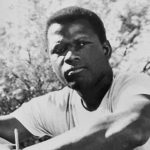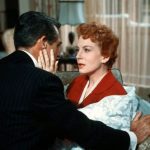 Travel
Travel  Travel
Travel  Movies and TV
Movies and TV 10 Actors Hidden in Your Favorite Movies
 Our World
Our World 10 Science Facts That Will Change How You Look at the World
 Pop Culture
Pop Culture 10 Incredible Female Comic Book Artists
 Crime
Crime 10 Terrifying Serial Killers from Centuries Ago
 Technology
Technology 10 Hilariously Over-Engineered Solutions to Simple Problems
 Miscellaneous
Miscellaneous 10 Ironic News Stories Straight out of an Alanis Morissette Song
 Politics
Politics 10 Lesser-Known Far-Right Groups of the 21st Century
 History
History Ten Revealing Facts about Daily Domestic Life in the Old West
 Weird Stuff
Weird Stuff 10 Everyday Products Surprisingly Made by Inmates
 Travel
Travel 10 Natural Rock Formations That Will Make You Do a Double Take
 Movies and TV
Movies and TV 10 Actors Hidden in Your Favorite Movies
 Our World
Our World 10 Science Facts That Will Change How You Look at the World
Who's Behind Listverse?

Jamie Frater
Head Editor
Jamie founded Listverse due to an insatiable desire to share fascinating, obscure, and bizarre facts. He has been a guest speaker on numerous national radio and television stations and is a five time published author.
More About Us Pop Culture
Pop Culture 10 Incredible Female Comic Book Artists
 Crime
Crime 10 Terrifying Serial Killers from Centuries Ago
 Technology
Technology 10 Hilariously Over-Engineered Solutions to Simple Problems
 Miscellaneous
Miscellaneous 10 Ironic News Stories Straight out of an Alanis Morissette Song
 Politics
Politics 10 Lesser-Known Far-Right Groups of the 21st Century
 History
History Ten Revealing Facts about Daily Domestic Life in the Old West
 Weird Stuff
Weird Stuff 10 Everyday Products Surprisingly Made by Inmates
The Ten Greatest Biblical Epics of Classic Hollywood
Every spring, when the month of April arrives, pastel colors herald the arrival of a new holiday season. And whether you are a Christian commemorating the resurrection of Jesus for Easter or a Jew celebrating Passover and Moses leading the children of Israel out of Egyptian bondage, there are many classic movies for believers that depict both seminal religious events as a well as a few other famous stories adapted from the pages of the Bible.
In the 1950s, Hollywood introduced the widescreen formats of Cinemascope and Cinerama. And the era of the sword-and-sandal biblical epic reached its zenith as one of the most popular genres in movie history. Here are ten of the greatest biblical epics ever produced during the Golden Age of Hollywood.
Related: 10 Historical Adventures Worthy Of Hollywood
10 The Greatest Story Ever Told
Considering the talent involved, this should have been the “greatest movie ever made.” With screen credits like Shane, Giant, and A Place in the Sun, director George Stevens was one of the most acclaimed directors in Tinseltown in 1965. Cast as Jesus was acclaimed international star Max von Sydow, renowned for his collaborations with Swedish director Ingmar Berman. The supporting cast was a veritable Hollywood “who’s who,” including such acting dignitaries as Charlton Heston, Dorothy McGuire, Claude Rains, Sidney Poitier, and—dare I say—John Wayne, jarringly cast as a Roman centurion.
But for many, the barrage of cameos by major Hollywood players was distracting. That, coupled with an original run time of four hours and twenty minutes and Stevens’s direction of a film that many critics found overly slow-paced and solemn, led to the film earning back just $15.5 million. This was well short of its production budget of $20 million. Nonetheless, the movie did receive five Academy Award nominations. Today, critics and audiences remain divided in their opinion of a film that many blame for the demise of the biblical epic genre.[1]
9 The Bible: In the Beginning
One year after Stevens’s epic of the life of Christ, legendary filmmaker and character actor John Huston tackled the Bible by going back to its beginning, literally, in an epic retelling of the book of Genesis. Known for directing such classic films as The Maltese Falcon, The Treasure of the Sierra Madre, and The African Queen, The Bible: In the Beginning was a change of pace for Huston.
Starting with the creation of man, the movie also depicts Cain’s murder of Abel, the Tower of Babel, the destruction of Sodom and Gomorrah as well as the story of Noah’s Ark. In one memorable scene, Huston is the narrator, portrays Noah, and is the voice of God. For his big-budgeted epic, he assembled an all-star cast that included George C. Scott as the prophet Abraham, Ava Gardner as his wife Sarah, and Peter O’Toole as the three visiting angels.
As with The Greatest Story Ever Told, Huston’s biblical epic was criticized for being overly long, slow-paced, and too reverent. However, unlike Stevens’s film, The Bible did well at the box office and was the top-grossing film in the U.S. and Canada in 1966. However, it remains another classic Hollywood biblical epic that continues to receive mixed reviews.[2]
8 Samson and Delilah
Without question, no director has been more identified with the success of the biblical epic than the man who virtually made a career and millions of dollars producing them, Cecil B. DeMille. In 1949, just fifteen years removed from the production of his violent and sexually charged Roman epic, The Sign of the Cross, DeMille mined the fertile pages of the Book of Judges. He found the ultimate tale of temptation and judgment, the story of Samson and Delilah.
To play the Hebrew strongman, DeMille turned to film noir tough guy and future film gladiator Victor Mature. To play the temptress Delilah, DeMille sought an actress who would be “a combination of Vivien Leigh and Jean Simmons with a generous dash of Lana Turner.” He settled for brainy Austrian beauty (and future inventor) Hedy Lamarr. The results were memorable, with the spectacle of Samson breaking the pillars of the Temple of Dagon and killing the Philistines as a sample of groundbreaking special effects he would later employ to perfection in The Ten Commandments.
At the 23rd Academy Awards, Samson and Delilah would win two Oscars for Best Color Art Direction and Best Color Costume Design. But surprisingly, the film lost for Best Special Effects to the less-remembered Destination Moon.[3]
7 Quo Vadis
Director Mervyn Leroy’s epic adaptation of the 1896 novel Quo Vadis was wildly popular with 1951 audiences and was the top-grossing film at the box office that year. Starring Robert Taylor (whose performance would be lampooned in 2016’s Hail, Caesar!), perennial Oscar nominee Deborah Kerr, and a memorable Peter Ustinov as Nero, the movie was nominated for eight Academy Awards. It failed to win a single one.
The film was almost made two years earlier with director John Huston at the helm, with Gregory Peck and Elizabeth Taylor cast as the two leads. Peck, however, contracted an eye infection, and the production delay led to all three being replaced. Audrey Hepburn was also considered for the role that ultimately went to Kerr, as was Clark Gable for the Taylor role. However, Gable rejected the part for fear he would look ridiculous wearing Roman costumes.
Ultimately, Leroy’s cast resonated with audiences who viewed the film in droves. Despite faring generally well with critics and viewers alike, the movie did have its detractors, which Leroy rejected by declaring Quo Vadis to be an “extraordinarily authentic film.” He further added, “The nonsense Nero was sometimes made to speak was very much like the nonsense Nero probably did speak.” [4]
6 The King of Kings (1927)
In an illustrious film career that spanned both the silent and sound eras, Cecil B. De Mille left an indelible mark on film history with Hollywood’s most ambitious attempt to depict the life of Christ in the 1927 film The King of Kings. Starring veteran character actor H.B. Warner (who is probably best known today as “Old Man Gower” from the Christmas classic It’s a Wonderful Life) in the title role, DeMille depicted Christ reverently. This portrayal would influence other filmmakers for decades in the difficult challenge of how to present Jesus as a character on screen.
Almost anticipating the controversy that would plague Mel Gibson’s Passion of the Christ almost 90 years later, The King of Kings clearly placed the blame for the crucifixion at the feet of the High Priest Caiaphas, not the Jewish people as a whole. But in keeping with the DeMille formula of sex and religion, Mary Magdalene is presented as a high-priced courtesan, who is not only scantily attired in a jewel-studded wardrobe, but whose chariot is drawn by four zebras.
As with other DeMille-directed epics, The King of Kings stays true to the central narrative presented in the Gospels while taking artistic license to provide thrills and titillation for audiences. A hit with crowds and critics, DeMille considered the film to be his finest work and, in a magnanimous gesture, donated the profits of the movie to charity.[5]
5 King of Kings (1961)
Not to be confused with the silent film from 1927, 1961’s King of Kings was not a literal remake of the DeMille version. Originally titled Son of Man, this updated interpretation of the life of Christ is notable for many reasons. It was directed by auteur Nicholas Ray, one of the most unconventional and perhaps subversive directors of the 1950s. Instead of a respected actor of the stage, the role of Jesus is played by heartthrob and future commander of the USS Enterprise (before his untimely death in 1969) Jeffrey Hunter.
The Ray/Hunter combination led some to dub the movie “I Was a Teenage Jesus.” But more recently, critics view the film as being more about a “Rebel with a Cause” (a play on the title of the James Dean classic, also directed by Ray). It’s a unique and ambitious film that is enhanced by the narration of Orson Welles and Miklos Rozsa’s Golden Globe-nominated score while being slightly marred by Hunter’s somewhat stoic and stiff performance.
Had Hunter played Jesus with the zest and authenticity that he played as John Wayne’s sidekick Martin Pawley in The Searchers five years earlier and eschewed the henna rinse hair that Christ is often depicted with in 20th-century art, this might have been the masterpiece that all biblical epics would be judged by today.[6]
4 The Robe
Based on the popular Lloyd C. Douglas novel, the 1953 production of The Robe is probably best known today for being the first Hollywood film shot in the widescreen format Cinemascope. The film was massively popular and made a fortune for 20th Century Fox, raking in over 36 million dollars in the United States alone. The Robe scored well with not only audiences but also critics who praised the technical innovation of Cinemascope.
New York Times film critic, Bosley Crowther, wrote that in its portrayal of Christ, “the picture has dignity and restraint.” Originally, Tyrone Power and Jean Peters were cast in the lead romantic roles. However, after Power pulled out of the project and Peters became pregnant, they were both replaced by newcomer Richard Burton (who reportedly hated his role) and Jean Simmons (who reportedly had an affair with Burton during production).
Today, modern critics are more negative in their assessment of the film. However, much praise continues to be lavished on the performance of Victor Mature, who would reprise his role as a Greek slave and Christian convert a year later in Demetrius and the Gladiators. The sequel was a huge box office success, and Mature continues to receive props for his acting despite his oft-quoted self-deprecating quip, “I’m not an actor—and I’ve got 64 films to prove it!”[7]
3 Barabbas
Despite a filmography that included minor classics such as the film noir The Narrow Margin and the Disney sci-fi extravaganza 20,000 Leagues Under the Sea, filmmaker Richard Fleischer has also earned the enmity of countless critics for his other movies such as 1975’s Mandingo which Roger Ebert called “racist trash” and 1980’s The Jazz Singer which Leonard Maltin labeled a “BOMB!” Despite such widely divergent views of Fleischer’s directorial efforts, in 1961, he quietly filmed one of the most moving and well-acted biblical epics that focused not on a major biblical figure but a minor one whose brief appearance is featured in all four Gospels, the title character Barabbas.
Anthony Quinn gives one of his more complex performances as the man freed in place of Christ. His future leads him to slavery in the sulfur mines of Sicily and ultimately to the burning Rome of Nero. Featuring a strong ensemble cast of Arthur Kennedy, Ernest Borgnine, and Jack Palance as a sadistic gladiator, the film has generally enjoyed more appreciation from critics than fans. Perhaps the overkill of the biblical epic genre and the reliance on dubbed dialogue from a largely Italian supporting cast hurt the movie’s appeal in the U.S. Despite earning just over $6 million domestically, one might argue that in a career lasting over four decades, this is Fleischer’s masterpiece.[8]
2 The Ten Commandments
Forget that DeMille veers from Holy Scripture to cultivate a love triangle between Moses, Rameses II, and the Egyptian princess Nefretiri. And discard the occasional misstep in dialogue such as “Moses, Moses, you stubborn, splendid, adorable fool!” that seems plagiarized from a silent screen melodrama.
The bottom line is that the 1956 version of The Ten Commandments remains one of the most entertaining films ever created for the silver screen.
Employing a “cast of thousands,” groundbreaking special effects (such as the memorable “parting of the Red Sea”), a police lineup of great Hollywood villains (such as Edward G. Robinson and Vincent Price), and one of the most epic musical scores ever composed for a motion picture by Elmer Bernstein, DeMille orchestrated one of the most successful blockbusters in Hollywood history. Adjusted for inflation, the movie is still ranked #6 as the biggest movie moneymaker of all time.
And thanks to its eternal appeal, The Ten Commandments has been broadcast annually during the Easter and Passover seasons for 47 of the last 48 years on ABC. John Ford once stated, “I don’t think there is anyone who knows more about what the American public wants than Cecil B. DeMille—and he certainly knows how to give it to them.” Well over half a century since it was released, The Ten Commandments continues to prove that point every year.[9]
1 Ben-Hur: A Tale of the Christ
Based on General Lew Wallace’s novel of the same name, 1959’s Ben-Hur was a remake of the 1925 silent film starring Ramon Navarro and Francis X. Bushman. In a gamble to save the faltering MGM studios and to top the box-office success of The Ten Commandments, acclaimed director William Wyler was coaxed into taking on the project with the promise of a $10 million budget. Actually, the film would ultimately cost MGM over $15 million but, in the end, would make the studio a whopping $75 million.
Initially, Wyler hoped to cast Charlton Heston as the villain Messala, based on the actor’s earlier performance for him as a heavy in The Big Country. After failures to entice other big names to play the titular role of Ben-Hur, such as Marlon Brando and Burt Lancaster, Wyler decided to move Heston into the part and cast Northern Irish actor Stephen Boyd as the bad guy. For the romantic lead Esther, Wyler introduced beautiful Israeli actress Haya Harareet, a newcomer to American films.
Like The Ten Commandments, Ben-Hur included some of the most spectacular special effects ever filmed to date, including the famed chariot race sequence. This scene was so dangerous that second-unit director Yakima Canutt nearly lost his son Joe (in a dangerous stunt mishap that was left in the final cut), who doubled for Heston as a charioteer. Even today, Ben-Hur is tied for the most Oscars of all time, eleven (with Titanic and Lord of the Rings: Return of the King). Despite some detractors, including Chinese dictator Mao Zedong (who infamously called the movie “propaganda of superstitious beliefs, namely Christianity”), Ben-Hur has rightfully earned its reputation as one of the greatest epics ever committed to celluloid.[10]








